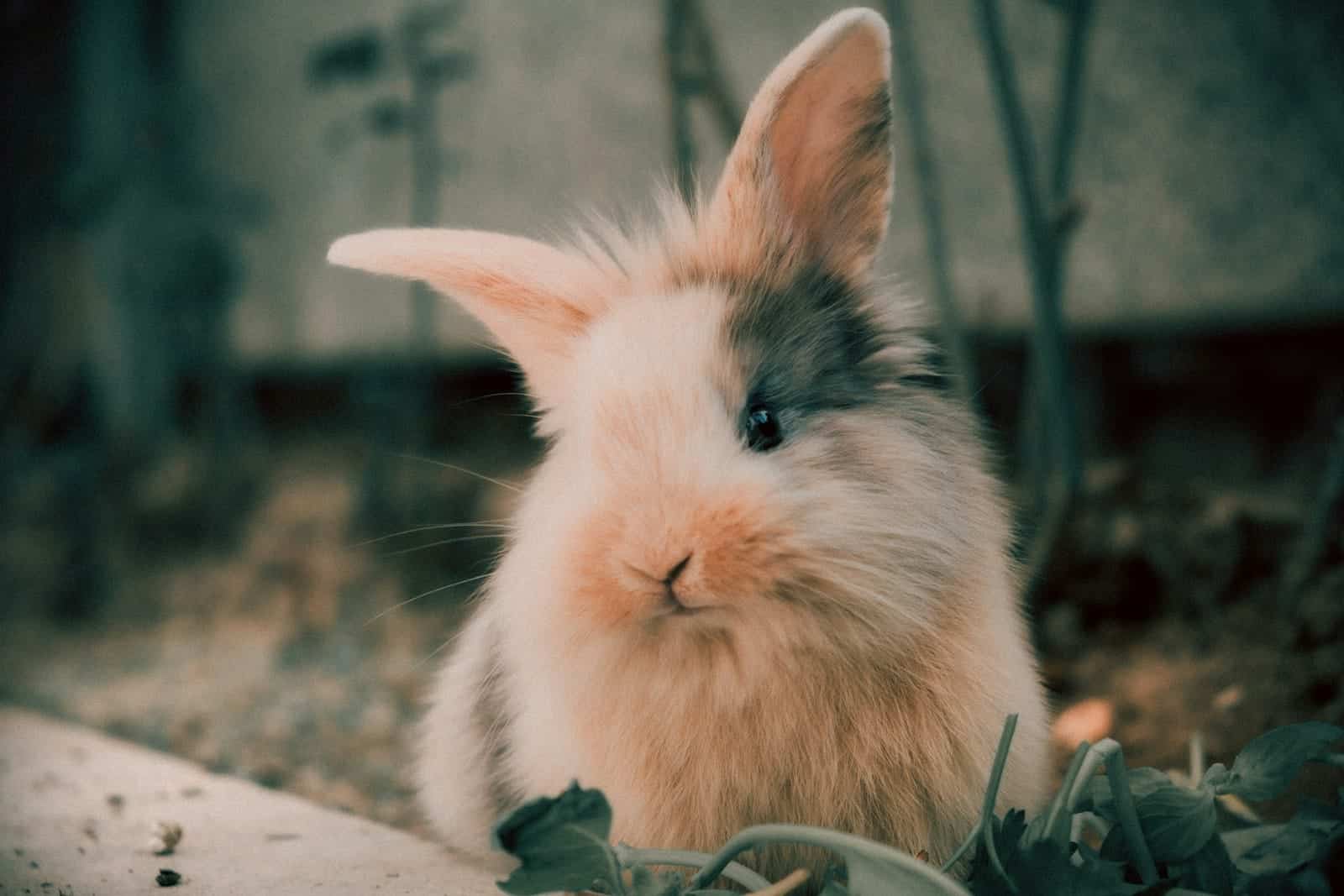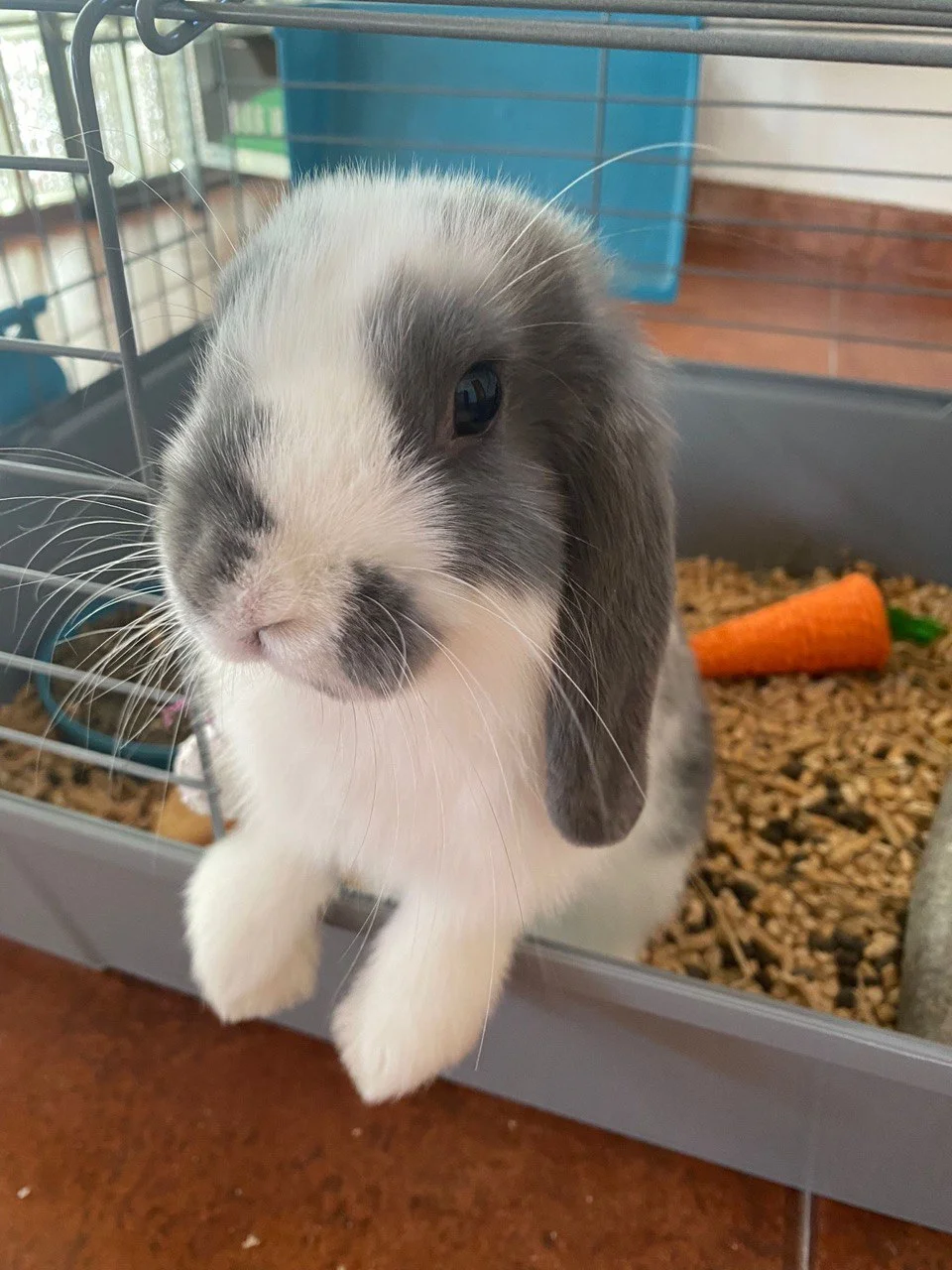Training a domestic rabbit is possible, but it differs from training dogs or cats. The rabbit is a prey; its instinct makes it wary of sudden movements and noises. It needs confidence and consistency. While dogs seek to please and cats obey when it is convenient for them, the rabbit responds mainly to the positive reinforcement (clicker + snack or cuddle). Any punishment undermines the relationship and slows down learning.
Basic domestic rabbit behavior: what you need to know before you start
Natural habits and communication signals
- Ears erect → attention or alertness.
- Ears backward → discomfort or anger.
- Binkies (jumps with spin) → enthusiasm and well-being.
- Rear leg blows → danger warning.
- Gentle nibbling → exploration; respect if you want space.
Learning this language avoids misunderstandings and strengthens your trust.

Why positive reinforcement works for rabbits
The method is based on rewarding the desired behavior immediately. The sound of the clicker works as a marker: it indicates that the gesture will be rewarded, which accelerates the association. Recent studies (University of Sydney, 2024) confirm that the clicker reduces stress compared to verbal commands alone.
How to get a rabbit used to you: bond with it first
- Lowers to its levelSit on the floor and let him explore.
- Do not lift it at the beginningyou will feel trapped.
- Offers healthy snacksParsley or apple slices.
- Quiet environmentNo loud noises; provides hiding places.
Gentle games such as "follow me" or hiding prizes in a smell rug encourage interaction without pressure.
First exercises for training a rabbit at home
Teaching you to respond to the call
- Choose a word ("come") and say it in a soft tone.
- Show the candy; when it comes near say click and rewards.
- Increase the distance gradually; practice 5 repetitions.
Teaching you how to use the corner
- Observe where he naturally relieves himself and place the tray there.
- Fill it with absorbent pellets and fresh hay.
- Rewards each correct use. Clean accidents with water and vinegar to eliminate pheromones.
Prevent chewing on furniture or cables
- Provides alternativesapple tree branches, sisal toys.
- Protects cables with sleeves or tubes.
- RedirectIf he bites a piece of furniture, immediately offer a toy and reward when he accepts it.
Clicker training: effective step-by-step technique
Associating the clicker with reward
Click → deliver the treat. Repeat 10 times, two days in a row, without orders.
Initiating basic clicker commands
- Touch with the nosepresents the hand; click when touched.
- Tour: guide with snack in circle; click to complete.
- Salta: place low box; click to overcome.
Short sessions, quiet environment, maximum 15 min. Always ends successfully.
Common problems and solutions
- Fear of clicking: cushion it with cloth or use a pen without ink.
- DistractionTraining before the main meal when he is receptive.
- OverexcitationUse tiny pieces and pause.

How to adapt your home for a happy, well-behaved rabbit
Confined spaces vs. total freedom
Start with a corral or metal playpen of at least 4 m². Expand the territory as he obeys. Reward each voluntary return.
Environmental enrichment and homemade toys
- Cardboard tunnels, low shelves, boxes with hay.
- Forage wheels to stimulate search.
- Wicker balls filled with herbs.
Hygiene and daily routines
- Fixed meal schedules.
- Daily check of tray and water.
- 30 min of interactive game.
These routines reinforce the rabbit's sense of control, improving its willingness to learn.
Comparative table of healthy rewards
| Award | Recommended portion | Benefit |
|---|---|---|
| Apple tree twigs | 1-2 branches/day | Dental wear |
| Parsley leaf | Small handful | Vitamins A and C |
| Apple dice | 1 tablespoon (2-3 g) | High value reinforcement |
Common training mistakes (and how to avoid them)
- Forcing the rabbitdestroys confidence.
- Using punishmentscreates fear; ignores undesired behavior and reinforces correct behavior.
- Inconstancyalways use the same word and gesture.
- Interrupting the breaktrain when active (dusk/dawn).
Additional Resources
- The House Rabbit Handbook (4th ed., 2023)
- YouTube Channel Small Ears (visual demonstrations)
- Udemy Course Clicker Training for Rabbits (updated 2025)
- Free PDF "Training Checklist" - download at Perrolobo.org/checklist-rabbits
Frequently asked questions on how to train a rabbit
How to train a baby rabbit? Start at 8 weeks with gentle handling and confidence building; avoid complicated commands.
How long does it take to train a rabbit? With daily sessions, the call can be learned in 2-4 weeks; use of the corner unit from 1 month to 3 months.
Can tricks be taught? Yes: spin, jump over obstacles, climb on a platform. Uses clicker and high value prizes.
How do you get a rabbit to listen to you? Respect their times, offer consistent rewards and keep sessions short.
What NOT to do when raising a rabbit? Do not yell, do not punish him in the cage, do not change techniques every day, do not train when he is stressed.



